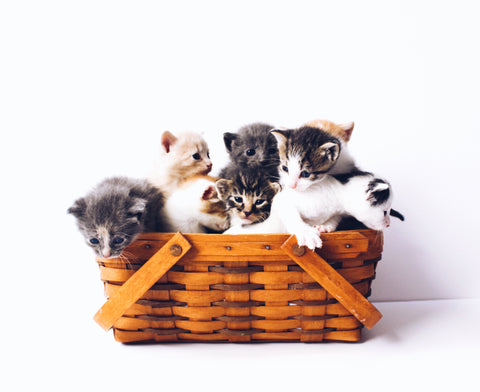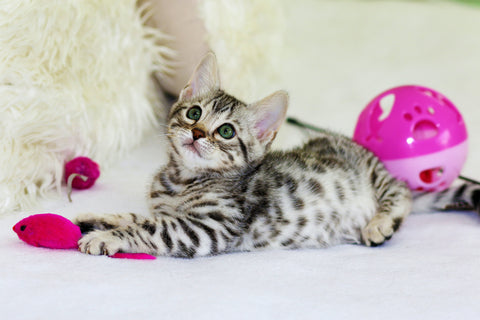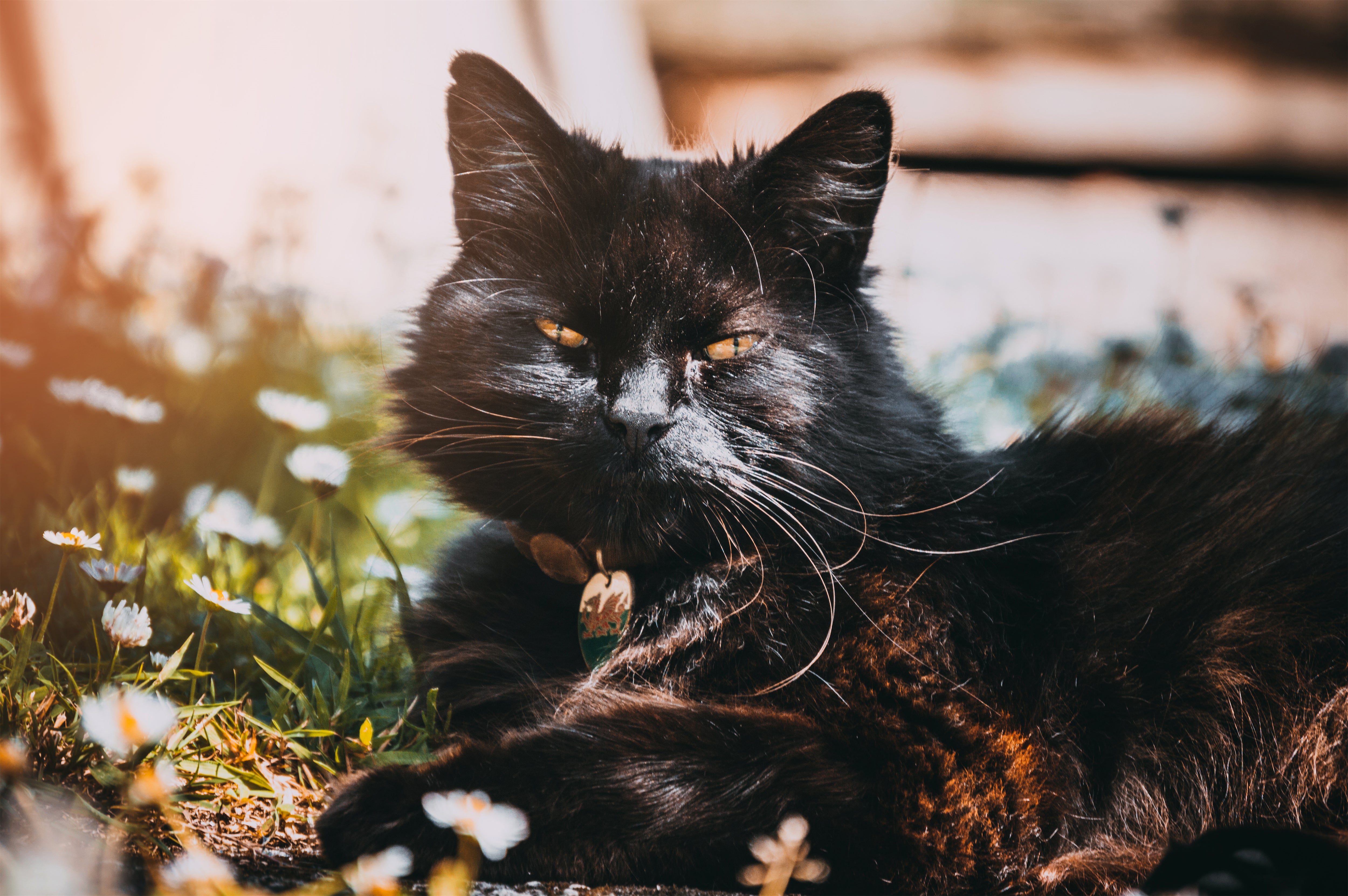Achieving harmony in your multi-cat household can often feel like orchestrating a symphony with a group of passionate and, sometimes, discordant musicians. If you're hearing more hisses than purrs and seeing more swats than snuggles, you're likely searching for a way to bring about peaceful coexistence. Looking for ways to keep peace in a house with more than one cat? You're in the right place! In this article, we'll discuss some useful tips on how to create a harmonious environment in your multi-cat household. So you can all live happily under one roof.

Understanding Feline Behavior
If you've ever watched a cat pounce on an invisible prey or marveled at its quirky fascination with cardboard boxes, you'll know that cats are creatures of unique habits and behaviors. But behind every twitch of the tail, every loud meow, or that intense stare lies a story - an insight into the captivating world of feline behavior.
1. Communication Through Tails and Whiskers
A cat's tail is like its emotional barometer. A raised tail often means a happy and confident cat, while a tucked tail might indicate fear. Whiskers, too, play a role! Forward-facing whiskers suggest curiosity, while whiskers drawn back can signal discomfort.
2. The Purr Conundrum
While we often link purring to contentment, cats also purr when stressed, unwell, or even in pain. It is essential to consider the context and look for other signs to determine their feelings.
3. The Love for Boxes
Ever noticed your cat's obsession with boxes? It's not just about fun. Boxes provide a sense of security and a great hiding spot. It's like their mini-fortress against the vast, open world.

4. The Nightly Zoomies
You're not alone if your cat gets hyperactive, especially at night. These "zoomies" can be traced back to their wild ancestors, who were most active during dawn and dusk. It's their natural burst of energy before settling down.
5. Biscuit-making or Kneading
When your cat kneads with its paws, it's usually a sign of comfort and contentment, a behavior rooted in their kittenhood when they kneaded their mother for milk.
6. The Bird-Watching Stare
Have you ever found your cat staring intently outside at birds or a wall? This behavior is linked to their predatory instincts. Even if they're well-fed and indoors, their inner hunter remains alert.

Tips for Creating A Harmony Environment
1) Slow and Steady Introductions:
Patience is key when bringing a new cat into a home with existing feline residents. Start by keeping them in separate rooms and allowing them to sniff each other's scent through door gaps or exchanged bedding. Over days or even weeks, gradually increase their face-to-face time under supervision. This paced approach helps reduce territorial disputes and allows both cats to adjust to each other's presence without feeling threatened.
2) Individual Attention:
Cats, like humans, crave attention and affection. In a multi-cat household, it's easy for one cat to overshadow another, leading to feelings of neglect or isolation in the less dominant cat. Therefore, it's crucial to spend quality one-on-one time with each cat. Whether it's a dedicated cuddle session, a unique playtime, or just chatting (yes, some cats love a good chat!), these individual moments help reinforce your bond with each cat and ensure that none feel left out or less valued. This individual attention not only caters to their emotional needs but also allows you to observe any subtle changes in their behavior or health.

3) Resource Abundance:
To prevent squabbles, ensure there's plenty of everything. This means multiple food bowls, water dishes, litter boxes, scratching posts, and toys. When resources are abundant and accessible, cats are less likely to feel the need to compete or guard them, leading to fewer confrontations and a more peaceful coexistence.

4) Scheduled Playtimes:
Organized and supervised play sessions can be a bonding experience for your cats. Using toys that encourage group activities, like laser pointers or feather wands, can help your cats associate each other with fun times. Moreover, playing helps burn off excess energy, reducing the chances of aggressive or disruptive behaviors.
5) Monitor for Signs of Stress or Illness:
Stress or illness in one cat can disrupt the harmony of the entire household. Cats are experts at hiding discomfort, so it's essential to be vigilant. Symptoms can range from changes in eating habits, excessive grooming, hiding, or unexplained aggression. If one cat isn't feeling well, it might become a target for others or lash out due to pain or discomfort. Regular vet check-ups are vital, but so is daily observation. By being attuned to your cats' normal behaviors, you'll be better equipped to spot when something is amiss and take timely action. Early detection and intervention can prevent minor issues from escalating and disrupting the household peace.
6) Consistent Routine:
Cats are creatures of habit. Keeping a consistent daily routine, from feeding times to play sessions, can instill a sense of security and predictability. When cats know what to expect and when to expect it, it can reduce anxiety and the chances of confrontational behaviors.
7) Encourage Play:
Engaging in play is not only great for physical exercise but also for mental stimulation and stress relief. Cats have innate hunting instincts, and play is a way for them to express these instincts in a controlled environment. In a multi-cat household, group play sessions can be a bonding experience. Using toys encouraging group participation, like a laser pointer, can help cats associate their fellow feline housemates with fun and positive interactions. If there's tension between certain cats, it might be a good idea to play with them separately and then gradually introduce shared play sessions. Ensuring that each cat gets their fair share of play promotes a happier, healthier, and more harmonious environment for all.
8) Monitor and Address Aggressive Behavior:
It's crucial to keep an eye out for signs of aggression or bullying among your cats. If one cat is consistently aggressive or another seems perpetually scared, it might be time for some intervention. This could mean revisiting the introduction process, consulting with a vet, or seeking a cat behaviorist's expertise.
9) Celebrate Small Achievements:
Every moment your cats share a space peacefully, acknowledge it. It could be as simple as sitting on the same couch or watching birds together by the window. These moments indicate growing acceptance and are steps toward a harmonious household. Over time, these peaceful coexistences will become the norm rather than the exception.
Conclusion
Navigating a multi-cat household's intricacies can be a dance of personalities, spaces, and resources. Yet, with understanding, patience, and feline finesse, creating that sought-after harmony in your multi-cat household is a dream and a tangible reality. Remember, just as every cat has unique purr, quirks, and preferences, every home will have its rhythm. So, take a breath, celebrate the small victories, and cherish the delightful chaos and cuddles that come with a house full of whiskers and tails. After all, a harmonious multi-cat home is truly a joy and a testament to the love and dedication of its human caretaker. Cheers to the many purrs and playful moments ahead!

